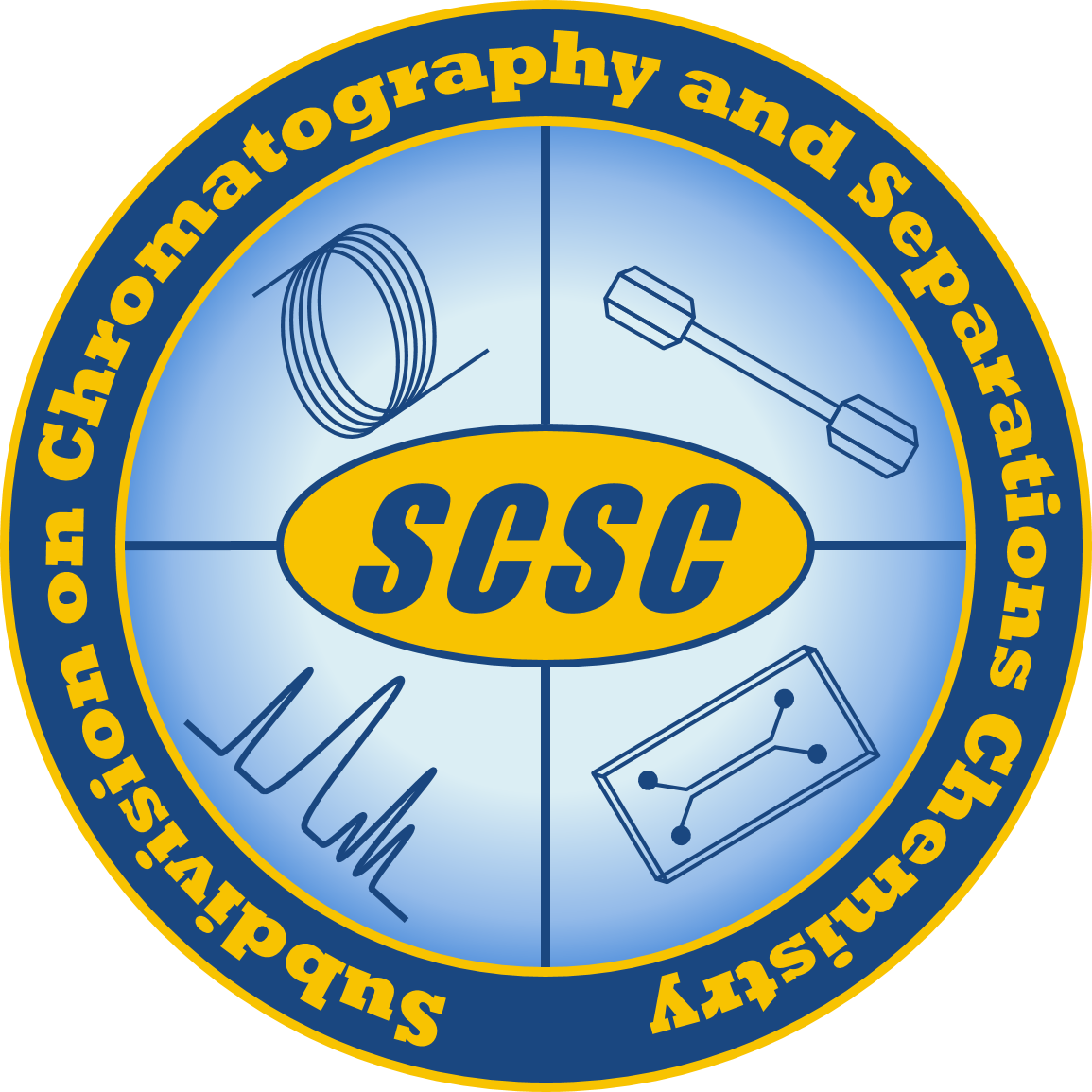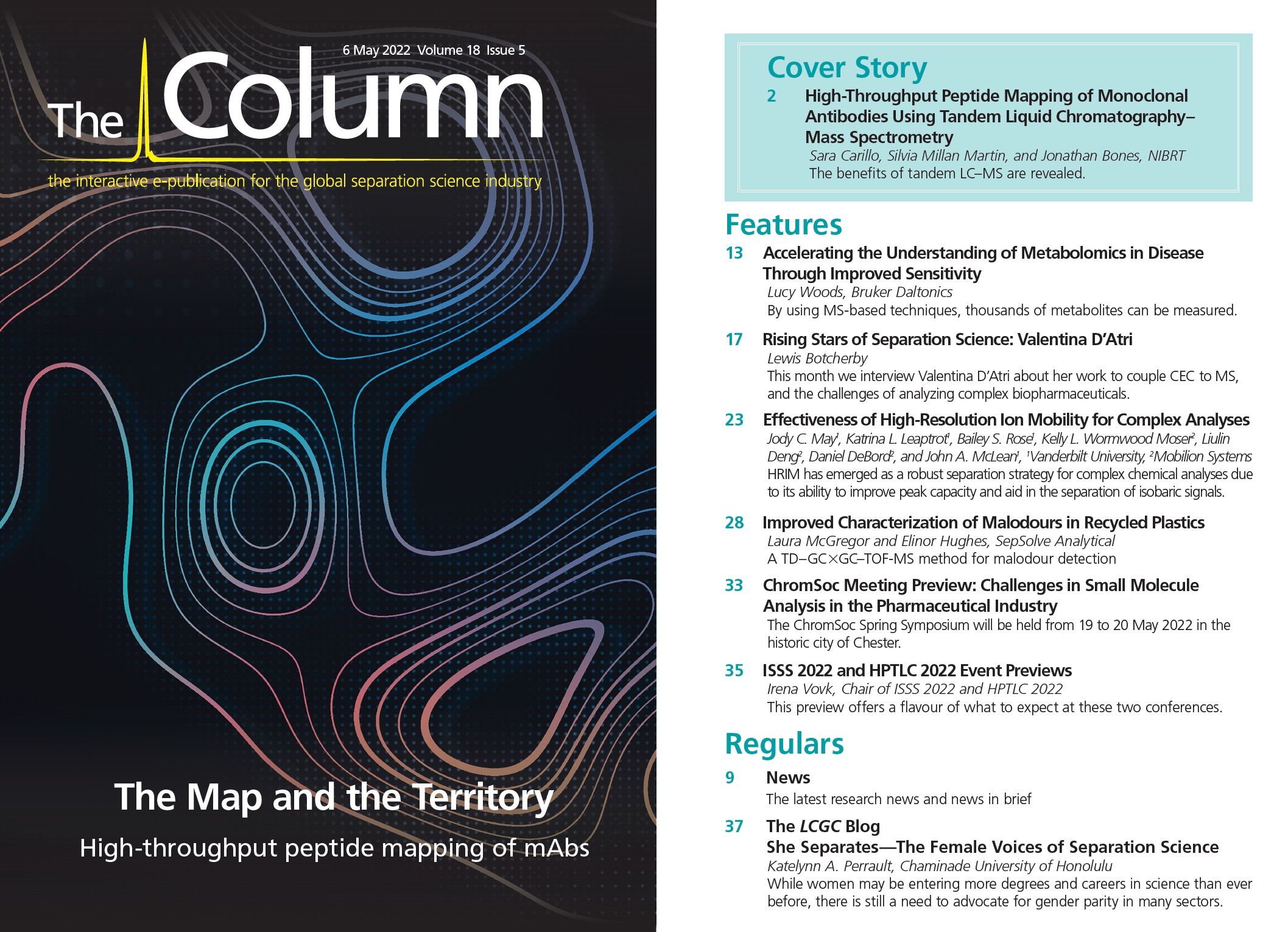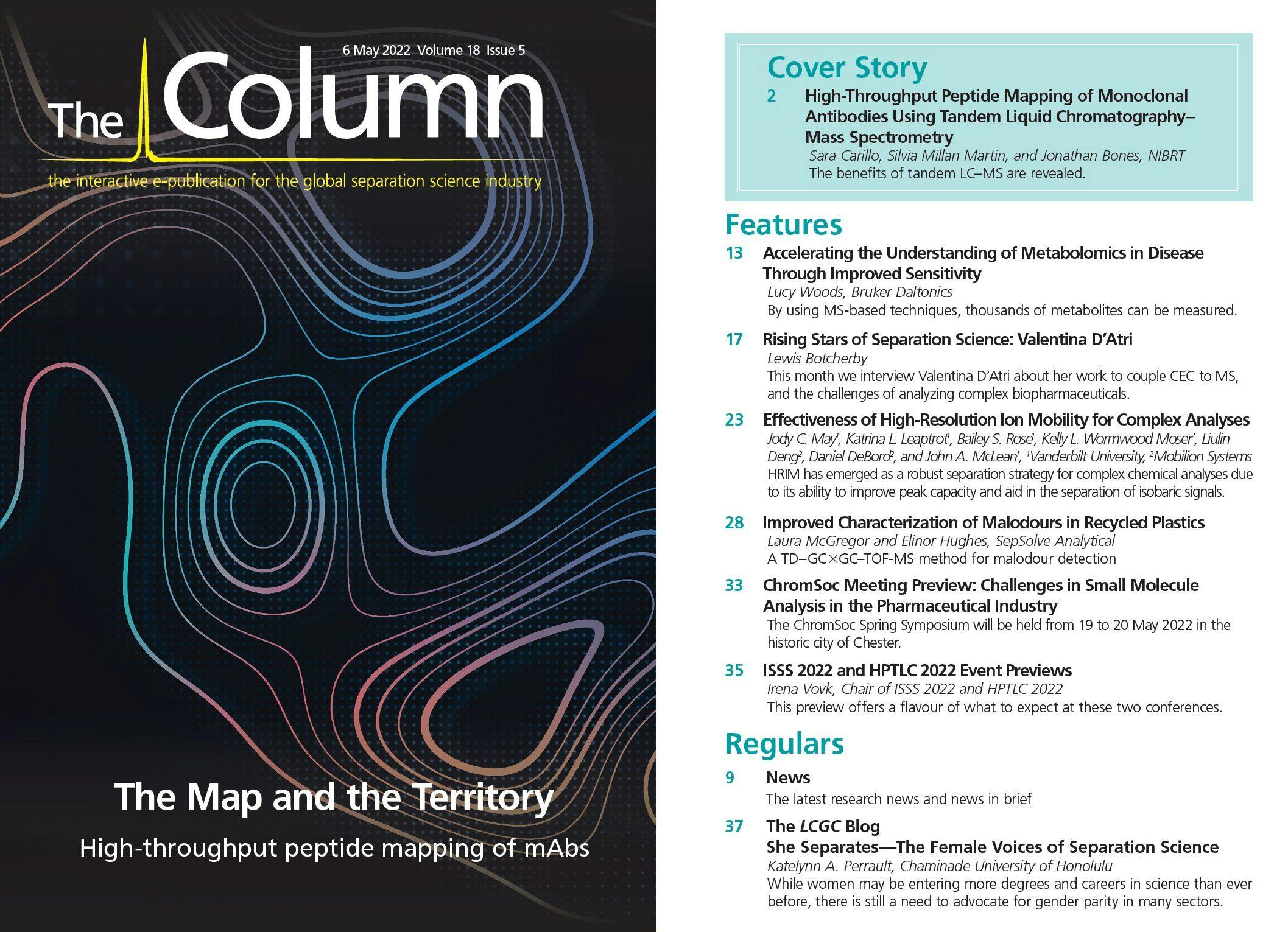The LCGC Blog: She Separates—The Female Voices of Separation Science

This blog is a collaboration between LCGC and the American Chemical Society Analytical Division Subdivision on Chromatography and Separations Chemistry.
The Season to Celebrate
This time of year always makes me particularly proud to have become a scientist. In February we are surrounded by a multitude of materials advertising the great accomplishments of women in science, due to UNESCO’s International Day of Women and Girls in Science. Shortly after, in March, we celebrate accomplishments of women in a variety of fields that impact societal advances with International Women’s Day. Often, we are reminded of women who were overlooked in science history for discovering great knowledge that we use today. I am reminded of a great blog article written by Michelle Misselwitz that explains the history of Dr. Erika Cremer’s contributions to the invention of gas chromatography (GC) (1). The inaccessibility of Cremer’s work during the period in which it was performed has largely been attributed to the gender and political biases of the time. If you are a chromatographer, and you are unaware of Cremer’s contributions to GC, I highly encourage you to read this article (or other historical accounts) about the early days of GC in Cremer’s laboratory. This time of year tends to serve as a reminder that while women may be entering more degrees and careers in science than ever before, there is still a need to advocate for gender parity in many sectors.
My Experience as a Woman in Separation Science
I was fortunate to be raised in an environment where I was never told that I couldn’t do or study something just because I was a girl. I have, however, dealt with gender bias many times in my career, and know that it is something that I will continue to face in the future to some extent. From each experience, I try to learn and grow. As a graduate student, I told myself I had to work extra hard to get my work published, be noticed, and make connections with prominent scientists. As a postdoctoral scientist, I struggled with taking ownership of my science, often being perceived as an assistant to male scientists with whom I worked closely.
As a faculty member, I have made it my mission to share my passion for chemical separations with my students, and get them to dream big. I am a “cheerleader” for separation science, hoping to convince students how exciting this field can be. While the programs I teach are heavily dominated by female students, I am very cognizant that many of my students don’t believe they could go to graduate school, or do other things well within their reach. They tell me they aren’t sure they can do it, and it breaks my heart every time. We host large events to expose them to women scientists; I try to connect with every student in the classroom about what makes them excited; I meet one-on-one with students as much as possible and remind them of their potential; I teach a class dedicated to the transition to life after college; I share my stories and emotions. Most of all, I believe fiercely in them until they are able to do so themselves.
In 2019 I was awarded the American Chemical Society’s Satinder Ahuja Award for Young Investigators in Separation Science. This award is given annually by the Subdivision for Chromatography and Separations Chemistry (SCSC), the subdivision responsible for this blog article (and where I now serve as an Executive Committee member). I was shocked and thrilled about the award and quickly went to the website to view the list of past winners. To my surprise, I was the first woman to receive this award since its inception in 2004. I am proud to be joined by another female on the list, Dr. Robbyn K. Anand, in 2020, and to know that this landscape is changing. The list will one day be populated by many women who become our future separation science leaders. We are fortunate that the activities of the SCSC have helped to unite many women who are doing work in the field of separations, and to grow our networks. We are all extremely willing to network with others who may feel the benefit of this type of professional community, and hope you will join us at some of our future events.
Come to think of it, I’m not aware of any awards in my field of work that are named after a female scientist. It is not because they have not made meaningful and celebrated advances in the field of separations chemistry. Perhaps this comes from historical, political, or geographical factors. I hope this landscape will also change some day.
I am fortunate to be connected with a network of powerhouse scientists (who also just happen to share the same sex as me). I have benefitted from interactions with this amazing network in my career and do not take it for granted, because I know many women before me did not have such a privilege. I have always had colleagues to turn to when I had questions uniquely suited to women scientists.Today I recognize these women for their valuable contributions to the field of separation science by sharing with you some of their responses to questions I asked them. I hope you will enjoy hearing from them as much as I enjoyed recording their responses.
What got you interested in separation science?
- “In high school, I had a very inspirational science teacher, Miss Hutchins. She sparked my interest in chemistry, but I was always leaning towards analytical chemistry. I was always fascinated with separation science and decided to specialize in that.” – Dr. Melissa Dunkle, Research Scientist, Dow Benelux, BV
- “Once I was exposed to instrumentation during an internship in the Merck DMPK lab, I knew I always wanted to stay close to separation science.” – Dr. Kaitlin Grinias, Team Leader, GlaxoSmithKline
What inspires you to keep working in separation science?
- “Despite separation science being an old and well-established technique, the boundaries are constantly pushed and ever-changing to meet the needs of our evolving world, and that is very exciting! Every day is different and I'm constantly learning.” – Dr. Haleigh Boswell, Research Chemist, Chevron
- “I am always curious about how things work and what they are made of. Separation chemistry enables me to understand better the composition of complex samples, from environmental wastes to biological fluids” – Dr. Emanuela Gionfriddo, Assistant Professor, The University of Toledo
Which class do you think helped you most in your day-to-day life as a separations chemist?
- “I had access to well-equipped undergraduate labs, where the students could make their own injections on a GC–FID or GC–MS, or load their sample into an NMR. The first class where I remember having that experience was in the Organic Chemistry Lab. After college, when I went to interview for positions working in analytical labs, my hands-on experience with instrumentation was appreciated by the potential employers.” – Dr. Heather Bean, Assistant Professor, Arizona State University
- “I actually had a class in separation science in my third year at university that changed all my plans (I wanted to work on DNA analysis). I think it's the closeness to application and "real things" that I really enjoy.” – Dr. Caroline Gauchotte-Lindsay, Senior Lecturer, University of Glasgow
What has been a major challenge you have experienced in your career?
- “Overcoming imposter syndrome and truly believing that I belong, and that I still belong even when I don't know every answer. I still work on this every day, but I do think it has given me the ability to better recognize when others may be struggling with the same thing. I love when I am able to mentor younger scientists and connect with them on that level. We help each other.” – Dr. Sarah Prebihalo, ORISE Postdoctoral Fellow, U.S. Food & Drug Administration
- “I thought I had to choose between career ambition and motherhood. I decided I would put a pause on my career to have children, but then I found a fantastic opportunity to work part-time from home consulting with Chemistry Matters. It was the best of both worlds, and I realized that career ambition and motherhood do not need to be mutually exclusive.” – Michelle Misselwitz, PhD student, Duke University
- “Convincing the academic world that forensic science is based on ‘real’ science. I am trained as a chemist first and forensic scientist second, but many think that forensic science has no scientific foundation.” – Dr. Shari Forbes, Professor and Canada 150 Research Chair, University of Quebec at Trois-Rivieres
What are some of the activities you’d suggest students get involved in if they are looking to become separation scientists?
- “Summer programs, co-ops, and working in the laboratories of researchers are excellent ways to learn and be inspired” – Dr. Jane Hill, Associate Professor, The University of British Columbia
- “Attending conferences and workshops—especially those that offer courses on the technology. There are some great free events out there.” – Dr. Laura McGregor, Product Marketing Manager, SepSolve Analytical
- “Try to get involved in research as soon as you can. Getting hands-on experience not only gives you an idea of whether this is something you could enjoy doing every day, but also helps gives context to what you may be learning in class.” – Dr. Sarah Prebihalo, ORISE Postdoctoral Fellow, U.S. Food & Drug Administration
Is there anything you wish you knew or did when establishing your career as a separations chemist?
- “You absolutely do not have to put up with environments that don't work out for you. If something makes you uncomfortable, bring it up to management. If you bring it up and nothing gets done or you get dismissed, look for something different. You will spend about eight hours of your day or more in that environment, so I cannot stress how important it is that you feel comfortable in it.” – Nadin Boegelsack, Applications Chemist, SepSolve Analytical
- “My career path would not be a straight line. I could never have predicted at the end of high school, end of college, or the beginning of my PhD (after some time working in industry) where I would have ended up. Even after finishing my PhD, I couldn't have predicted the field of study I ended up specializing in.” – Dr. Heather Bean, Assistant Professor, Arizona State University
What has surprised you most about the work you do in separation science?
- “I am surprised about the evolution that has and still is taking place. From software to hardware and everything in between, separation science is constantly changing and improving. I am excited to see where we will be in another 10–20 years.” – Dr. Melissa Dunkle, Research Scientist, Dow Benelux, BV
- “How much I enjoy it! Chemistry was never my favorite subject at school, even though I enjoyed science generally. Had I realized the kind of career I could have using chemistry, I probably would have been more excited about it. I am lucky that my interest in forensic science meant that I established a foundation in chemistry first, which led me into separation science.” – Dr. Shari Forbes, Professor and Canada 150 Research Chair, University of Quebec at Trois-Rivieres
What other advice would you give to students that are unsure about their career path?
- “I like to tell my students that charting your career is more like sailing a boat than choosing one of ‘two roads diverged in a yellow wood.’ There's more room for course changes and tweaks than you might expect. So don't stress too much about making the wrong decision or getting every choice right on the first try. It's okay to check something out and change your mind, as long as you're being reflective along the way.” – Dr. Michelle Kovarik, Associate Professor of Chemistry, Trinity College
- “Spend time with training (3–6 months) opportunities ‘in the field’ in or outside university to get hands-on experience with what a specific job or task requires and how you feel when you get involved in something. Theory is nothing without feelings.” – Dr. Chiara Cordero, Full Professor of Food Chemistry, University of Turin
What do you still dream about for the future of separation science?
- “Handheld systems with great sensitivity and specificity that have a low cost... one can dream!” – Dr. Jane Hill, Associate Professor, The University of British Columbia
- “So many! The biggest dream for me, however, is to close the gap between academia and industry.” – Nadin Boegelsack, Applications Chemist, SepSolve Analytical
- “For scientists who are not practicing separation science to really understand how it helps in the understanding of many phenomena. I like to say that integration (like the approach applied in systems biology) has its most powerful application in separation science.” – Dr. Chiara Cordero, Full Professor of Food Chemistry, University of Turin
A Final Thought
And there you have it—advice from some amazing separation scientists. Thank you to everyone who responded to my survey and shared their hearts and souls to demonstrate how powerful separation science can be in the eyes of women in the field. Maybe one day we will all be celebrating together the inaugural awardee for an “Erika Cremer Prize in Gas Chromatography.” Maybe blogs and events and discussions like this will help us to achieve some of our dreams for the future of separation science with a diverse and inclusive workforce. One thing is for sure: Women have always been, and will continue to be, a major driving force behind advancement in the field of separation science.
Reference
- M. Misselwitz, “Who invented gas chromatography?” Chemistry Matters(2019). http://blog.chemistry-matters.com/who-invented-gas-chromatography
Katelynn A. Perrault

Katelynn A. Perrault is an associate professor of Forensic Sciences and Chemistry at Chaminade University of Honolulu. She specializes in the application of comprehensive two-dimensional gas chromatography for odor analysis applications, and mentors numerous undergraduate researchers as part of her integrated teaching and research program. Her current interests include odor production from post-mortem microbes, development of GC×GC data processing workflows for dual-channel detection, promoting the adoption of GC×GC in the forensic sciences, and establishing GC×GC curriculum to be taught in undergraduate chemistry classes. Perrault was recently named the 2019 American Chemical Society Division of Analytical Chemistry Satinder Ahuja Young Investigator in Separation Science. Direct correspondence to katelynn.perrault@chaminade.edu.

This blog is a collaboration between LCGC and the American Chemical Society Analytical Division Subdivision on Chromatography and Separations Chemistry (ACS AD SCSC). The goals of the subdivision include
- promoting chromatography and separations chemistry
- organizing and sponsoring symposia on topics of interest to separations chemists
- developing activities to promote the growth of separations science
- increasing the professional status and the contacts between separations scientists.
For more information about the subdivision, or to get involved, please visit https://acsanalytical.org/subdivisions/separations/.

Study Examines Impact of Zwitterionic Liquid Structures on Volatile Carboxylic Acid Separation in GC
March 28th 2025Iowa State University researchers evaluated imidazolium-based ZILs with sulfonate and triflimide anions to understand the influence of ZILs’ chemical structures on polar analyte separation.



















